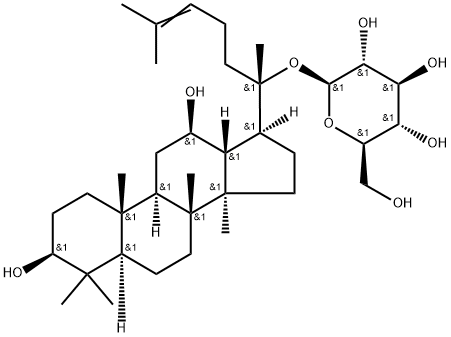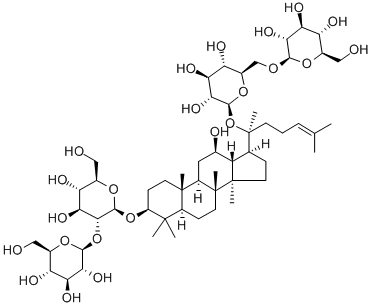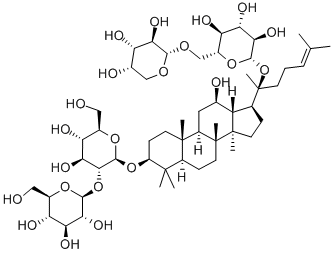Ginsenoside Compound K , 96%(HPLC) , 39262-14-1
| Pack Size | Price | Stock | Quantity |
| 5MG | RMB319.20 | In Stock |
|
| 25MG | RMB959.20 | In Stock |
|
| 50mg | RMB1439.20 | In Stock |
|
| others | Enquire |
PRODUCT Properties
| Melting point: | 181~183℃ |
| Boiling point: | 723.1±60.0 °C(Predicted) |
| Density | 1.19 |
| storage temp. | -20°C |
| solubility | DMF: 10 mg/ml; DMSO: 10 mg/ml; DMSO:PBS (pH 7.2) (1:1): 0.5 mg/ml |
| pka | 12.94±0.70(Predicted) |
| form | powder |
| color | White |
| Stability: | Hygroscopic |
| InChIKey | FVIZARNDLVOMSU-SFEJUJENNA-N |
| LogP | 5.500 (est) |
Description and Uses
Ginsenoside compound K (C-K) is a metabolite of the protopanaxadiol-type saponins of Panax ginseng C.A. Meyer, has long been used to treat against the development of cancer, inflammation, allergies, and diabetes; C-K acts as a unique HUVEC migration inhibitor by regulating MMP expression, as well as the activity of SPHK1 and its related sphingolipid metabolites. C-K exhibits anti-inflammatory effects by reducing iNOS and COX-2, C-K exhibits an inhibition against the activity of CYP2C9 and CYP2A6 in human liver microsomes with IC50s of 32.0±3.6 μM and 63.6±4.2 μM, respectively. C-K promotes Aβ clearance by enhancing autophagy via the mTOR signaling pathway in primary astrocytes.
Ginsenoside C-K is reported to exhibit anti-wrinkle effects. Also, it potentiates tumor necrosis factor (TNF)-related apotosis-inducing ligand (TRAIL)-induced apotosis in HCT116 colon cancer.
Safety
| Symbol(GHS) |  GHS07 |
| Signal word | Warning |
| Hazard statements | H302 |
| Precautionary statements | P264-P270-P301+P312+P330-P501 |




